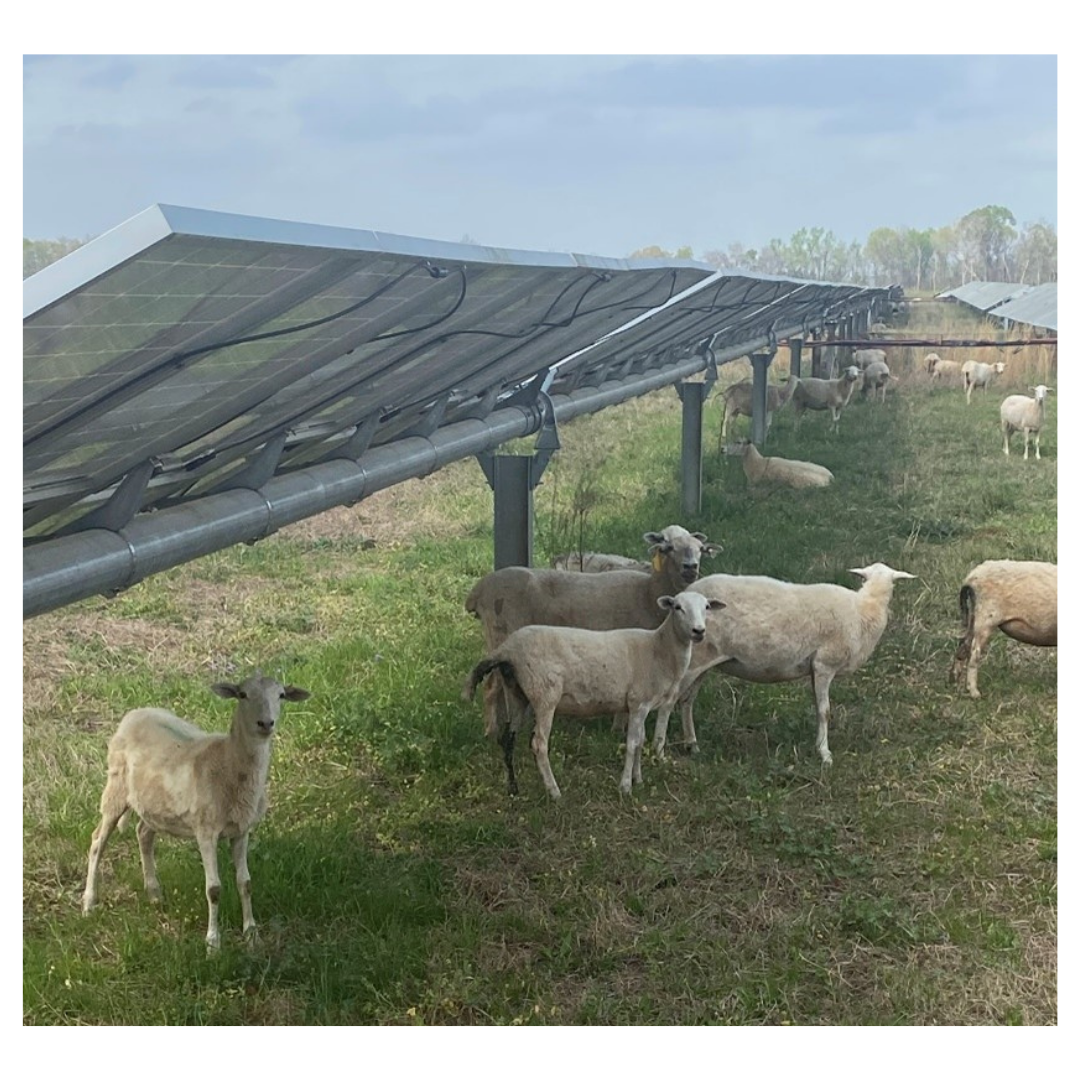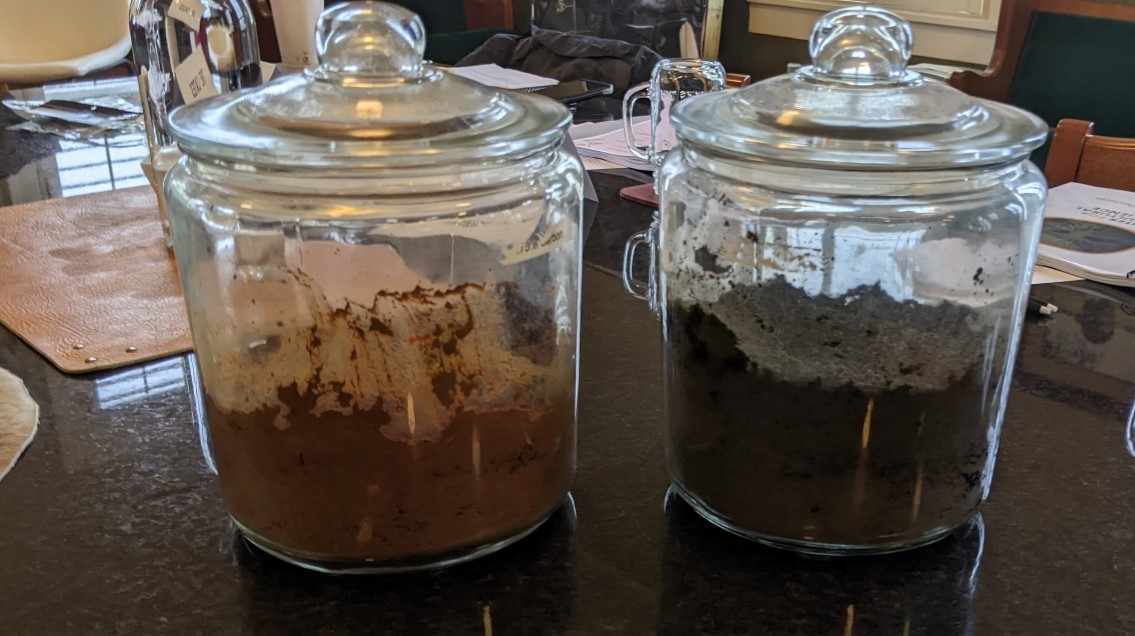
“Oh, Big Mama? Yeah, she’s a baby thief,” Bridget Hogan, a livestock manager at White Oak Pastures, said, pointing out a hefty ewe nicknamed for luring lambs away from their birth moms and trying to raise them as her own. Yet Big Mama, a parenting enthusiast, frequently takes on more youngsters than she can feed, Hogan explained to recent visitors at the Center for Agricultural Resilience. To save the lambs, the farm sheep crew often had to return them to their rightful parents.
This familiarity with a herd’s idiosyncrasies and offspring, are hallmarks of White Oak Pastures, a 3200-acre alternative farm in southwest Georgia. The Center for Agricultural Resilience is a program to train new leaders in farming methods based on the White Oak Pastures model. On this farm, ten livestock species—in herds of dozens to thousands of animals—are raised on practices that prioritize animal welfare and land regeneration.
The nationally recognized White Oak Pastures represents an alternative vision of farming that focuses on enhancing soil and ecosystem health, reducing the impact of climate change, and correcting the harm of industrial agriculture. Farming dominated by large agribusinesses and conventional farmers, in contrast, emphasizes intensive production of crops and animals that require widespread use of fertilizers and antibiotics.
Transitioning to alternative paradigms such as regenerative agriculture requires a massive overhaul of the $16 billion federal farm subsidy program currently under discussion in Washington as part of a keystone federal agricultural legislation passed every five years. In 2022, Congress has a prime opportunity to support small farmers and incentivize environmental, social, and climatic reforms that can make American agriculture more sustainable.
Today though, industrial animal agriculture, or “factory farming,” is still the norm; for example, more than 80% of US beef is from feedlots with a capacity of 1,000+ cattle. Enabling this concentration are subsidies for major livestock feed crops, such as corn, wheat, and soybeans. These three crops have received the largest agricultural subsidies over the last 25 years, totaling over $200 billion. By creating artificially cheap livestock feed, these subsidies provide affordable meat for millions of Americans. But, that luxury comes at a price; livestock and their feed production are responsible for 14.5% of greenhouse gas emissions globally.
Three decades ago, White Oak Pastures was a prime example of industrial agriculture. At the time, the farm was a conventional cattle feedlot, consisting of thousands of cattle fed an unhealthy diet of corn, soy, and miscellaneous other industrial “byproducts.” The pastures were continuously grazed and the soil exhausted.
By the 1990s, Will Harris, a fourth-generation cattle farmer at White Oak Pastures, became dissatisfied with the welfare of his cattle and the condition of the land. To remedy his concerns, Harris began an economically risky journey of implementing incremental changes, such as excluding chemical fertilizers, switching from corn feed to carefully managed grazing practices, and building their own processing facilities.
The key to White Oak Pasture’s regeneration efforts has been the “holistic grazing” management style. Known as adaptive multi-paddock or rotational grazing, this style involves rotating livestock through multiple small fields, as often as once a day, to graze grasses for short but intense durations followed by long rest times. This practice keeps the grasses in a ‘growth’ state, increasing the total forage, improving the soil health, and providing beneficial ecosystem services such as reducing erosion, improving water quality, and increasing biodiversity.

The transformation in soil quality is visible at White Oak. In the fields under rotation, the soil is dark brown, rich with soil organic matter and teeming with microbial life. Just over the fence from White Oak Pastures, fields on the neighboring farm grow row crops under the industrial system and are primarily red Georgia clay, stripped of the rich organic matter.

The organic matter present in the soils of White Oak Pastures represents a significant increase in sequestered carbon. Sequestration begins when plants capture carbon through photosynthesis. As these plants break down or are consumed—and then expelled—by livestock, the remaining organic matter stores carbon in the soil.
One recent study found that adaptive multi-paddock management in the US Southeast increased the soil organic carbon by an average of 13%. A 2020 life-cycle analysis at White Oak Pastures demonstrated that this soil sequestration reduced their beef’s net carbon footprint to 25% the size of conventional beef. Another life-cycle analysis in the Midwest even showed adaptive multi-paddock grazing allowed raising cattle to be a net carbon sink, or a place that absorbs more carbon than it releases.
However, researchers stress that more research is necessary to understand the differences in carbon sequestration by region and even variability within fields. Although the ecosystem services of regenerative agriculture are well documented, further studies will enable farmers to fund their sustainability efforts through carbon markets. These markets allow businesses and organizations to offset their own emissions by financially supporting other parties to mitigate carbon emissions. Regenerative farmers could be paid for carbon they can prove their management strategies sequester.
To change agriculture in the U.S., the farm subsidies system needs reform to encourage farmers to shift from unsustainable to regenerative production. The 2023 Farm Bill represents one of the most effective and timely opportunities to implement these necessary reforms. The next Farm Bill should include increased funding for alternative agriculture in the form of research, as well as funding and training farmers to implement more sustainable practices.
One promising solution is expanding the existing Environmental Quality Incentives Program (EQIP), which provides one-on-one support and co-invests in projects that allow farmers to create environmental benefits like increased soil health. We can’t afford to wait another five years to incentivize crucial environmental benefits and transform US agriculture. It’s time to begin rectifying historic agricultural mismanagement, and center regenerative practices that will provide food and climatic security for our future.
--
Acknowledgments:
I’d like to thank Emory Climate Talks for supporting my attendance at the Center for Agricultural Resilience at White Oak Pastures, the entire White Oak Pastures team for candidly sharing the their journey in regenerative agriculture, and Sheila Tefft for invaluable feedback on this blog post.